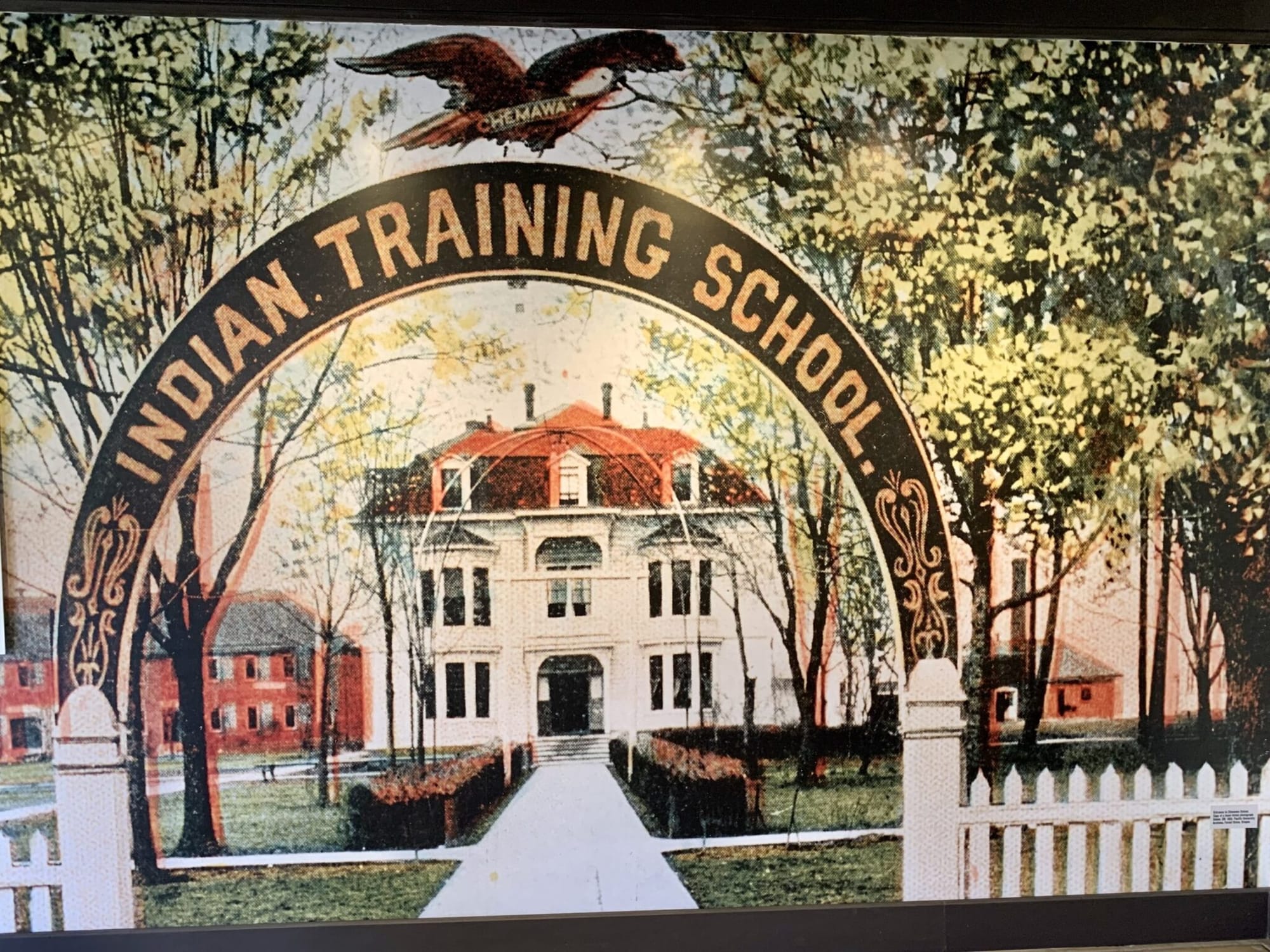
A look at the arrogant, misguided program to “improve” indigenous people by eradicating their culture.

Late 1982 found me relaxing in a thermal pool in Rotorua, New Zealand. I had just ridden my bike from Auckland and had days to go before reaching my destination at Nelson on the South Island.
I shared the pool with another American. When the conversation turned to the Māori people I said that while relations were not ideal, the Māori had been better treated than American Indians. His response to my list of injustices inflicted on Indians, “They’re a conquered people.”
I’ve thought of this compassionate fellow a few times over the years. He came to mind again when I learned the bittersweet history of Indian schools.
I don’t know where I stand on Indian schools. If you read Richard Henry Pratt, it seems that his intentions were good in that he wanted to integrate Indians into society rather than exterminate them. But like many colonialists, his view was that to save Indians meant turning them into white Americans. Their language, dress, culture, art: all gone. Replaced by sewing and football.
The “compassionate” part was that everyone knew that America was going to want more and more Indian land. The choices seemed to be to force more Indians onto smaller, less desirable parcels, or to kill them all, or to get them to live in white society and like it.
There was no doubt at all about the absolute superiority of European culture. What of the Indian way was worth preserving? Nothing.
What began as a flawed act of compassion quickly turned into a trail of tears. Children forcibly taken, siblings separated, names changed, clothing replaced. And English all the time.
Of course the desired outcome was not to produce Indian bankers or doctors or senators. But wouldn’t it be great to have an expanded pool of laborers, maids and cooks?
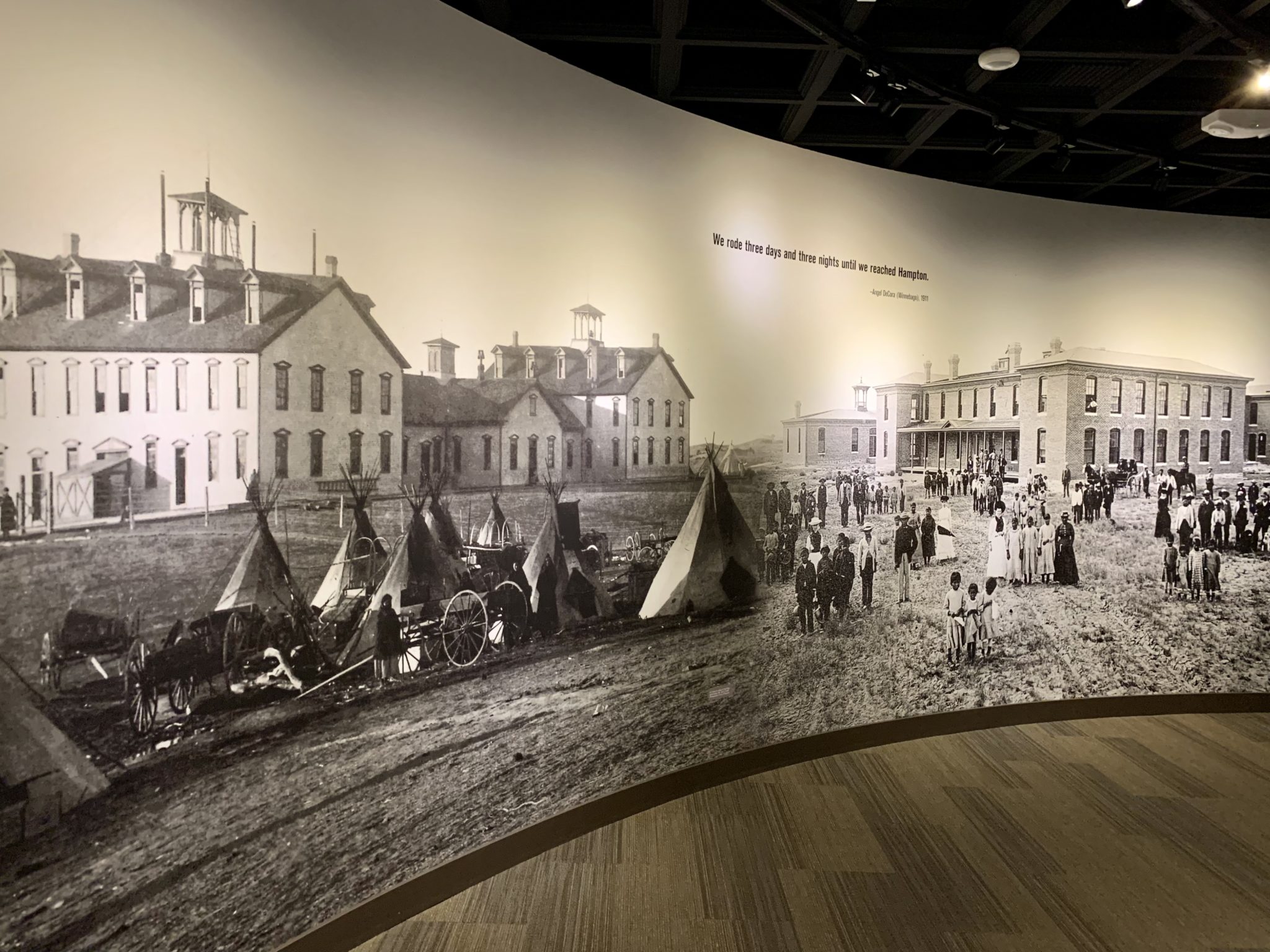
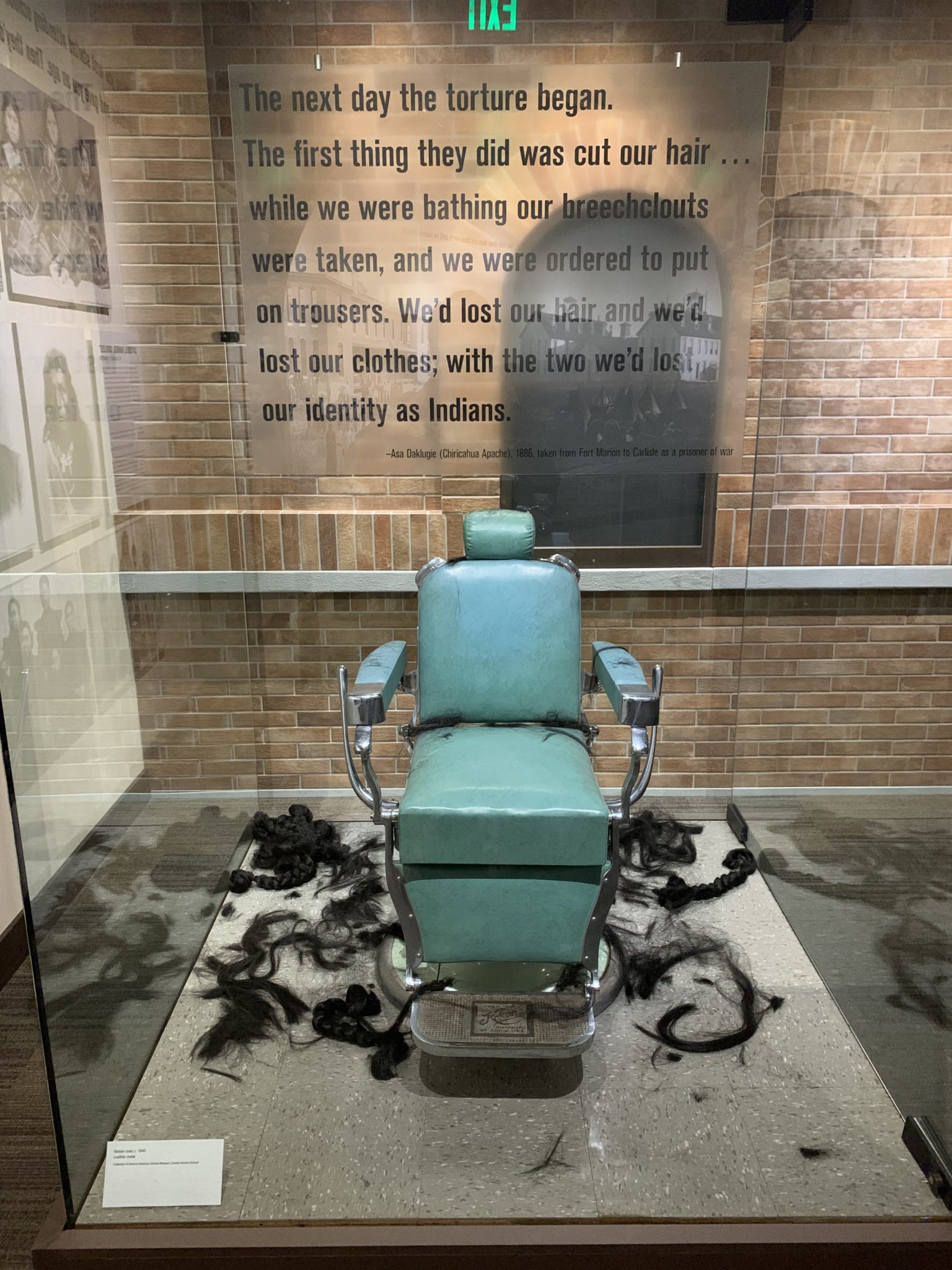
The next day the torture began. The first thing they did was cut our hair. While we were bathing our breechclouts were taken, and we were ordered to put on trousers. We’d lost our hair and we’d lost our clothes; with the two we’d lost, our identity as Indians.”
Asa Daklugie


Intimidation and fear were very much present in our daily lives, For instance, we would cower from the abusive disciplinary practices of some superiors, such as the one who yanked my cousin’s ear hard enough to tear it. After a nine-year-old girl was raped in her dormitory bed during the night, we girls would be so scared that we would jump into each other’s bed as soon as the lights went out. The sustained terror in our hearts further tested our endurance, as it was better to suffer with a full bladder and be safe than to walk through the dark, seemingly endless hallway to the bathroom. When we were older, we girls anguished each time we entered the classroom of a certain male teacher who stalked and molested girls.”
Levchuck Bernice
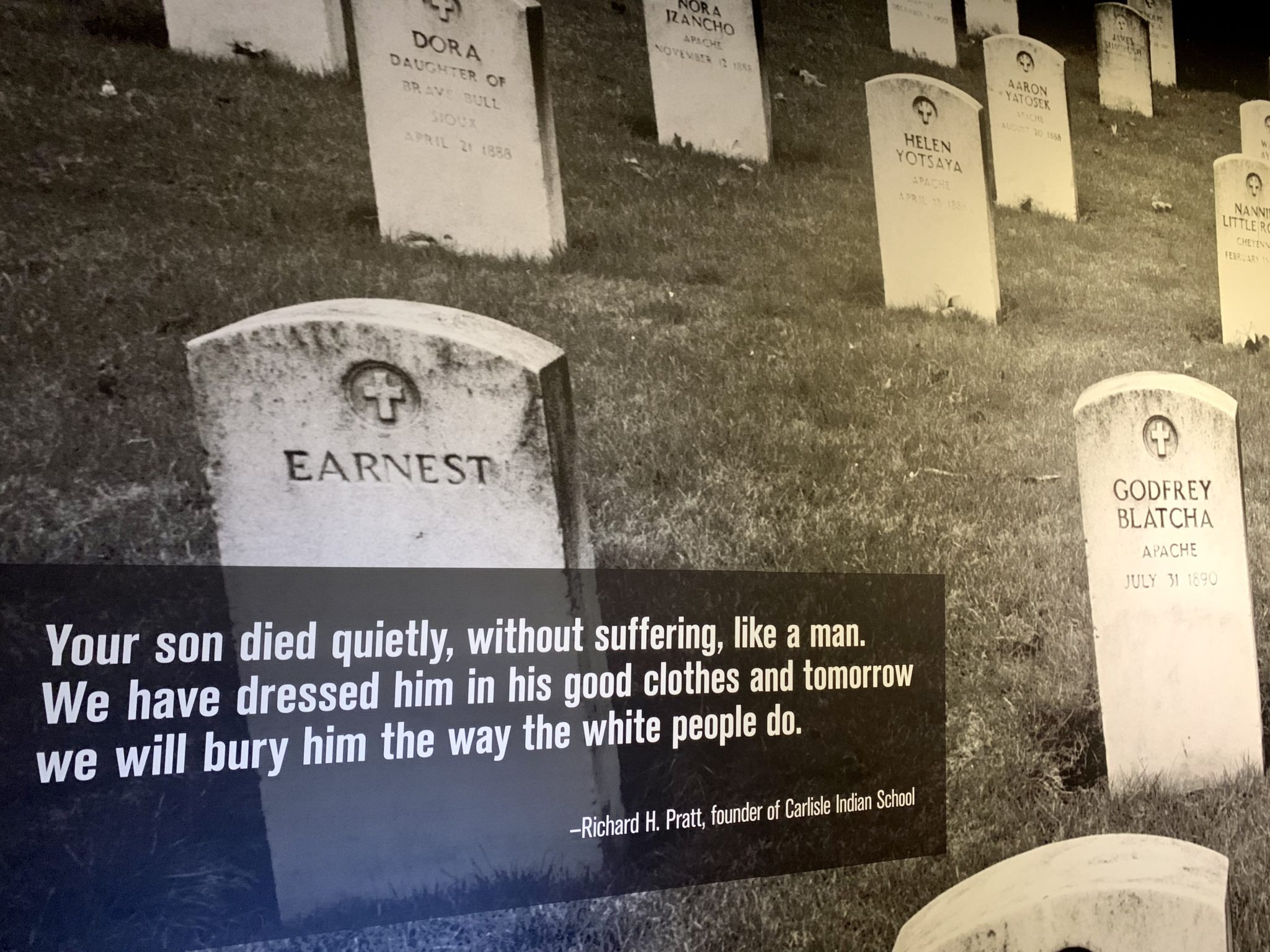
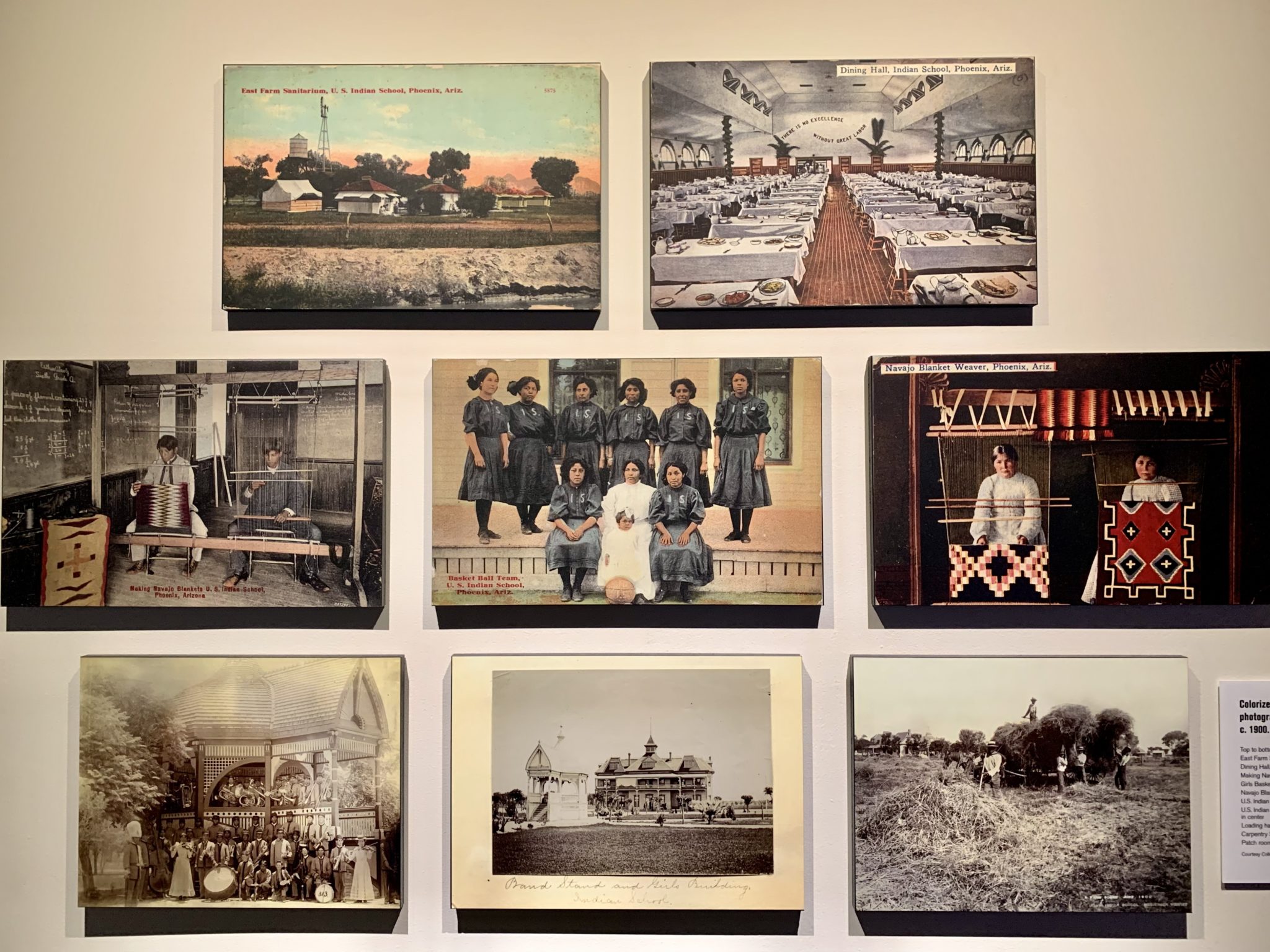
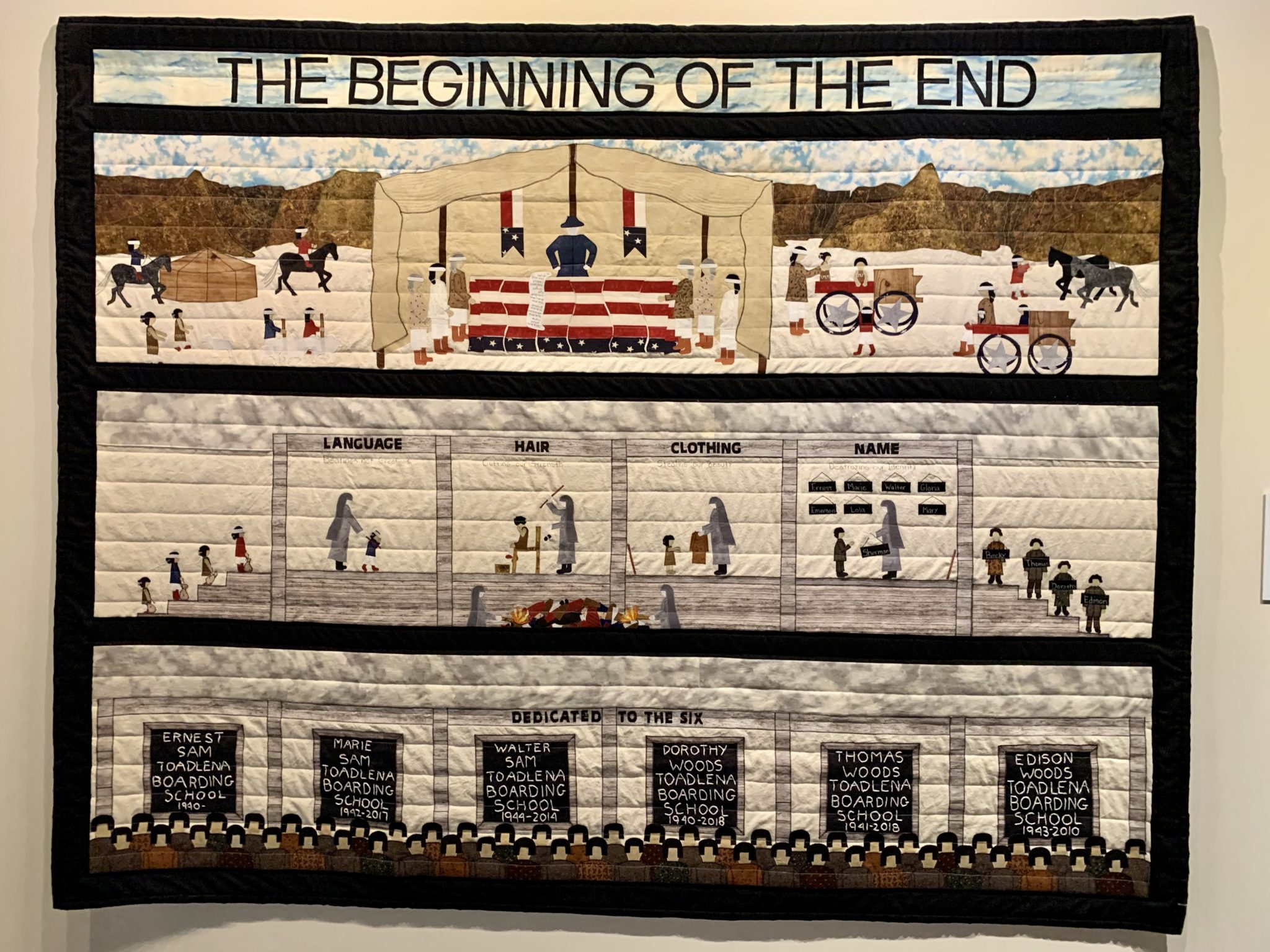
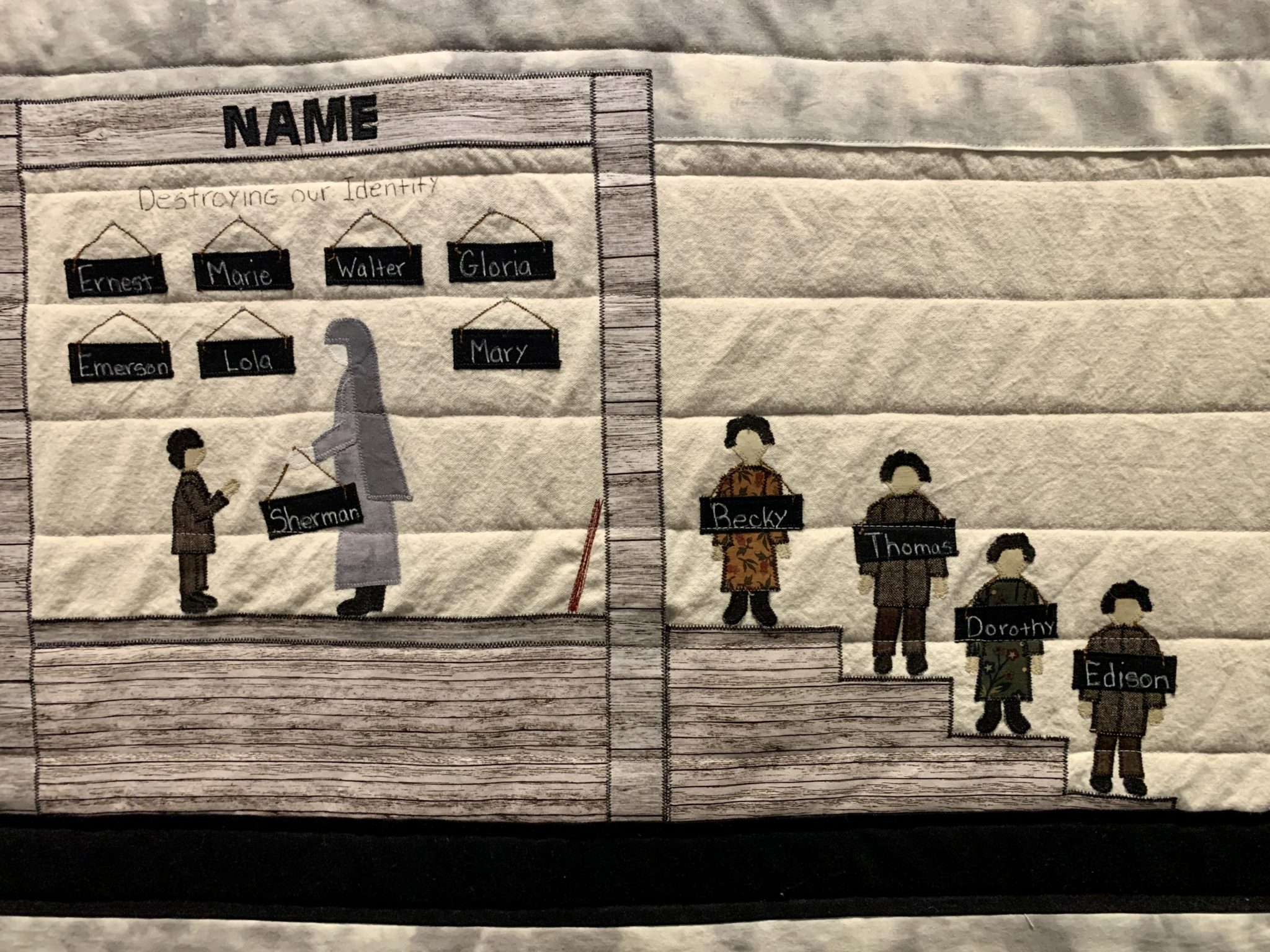
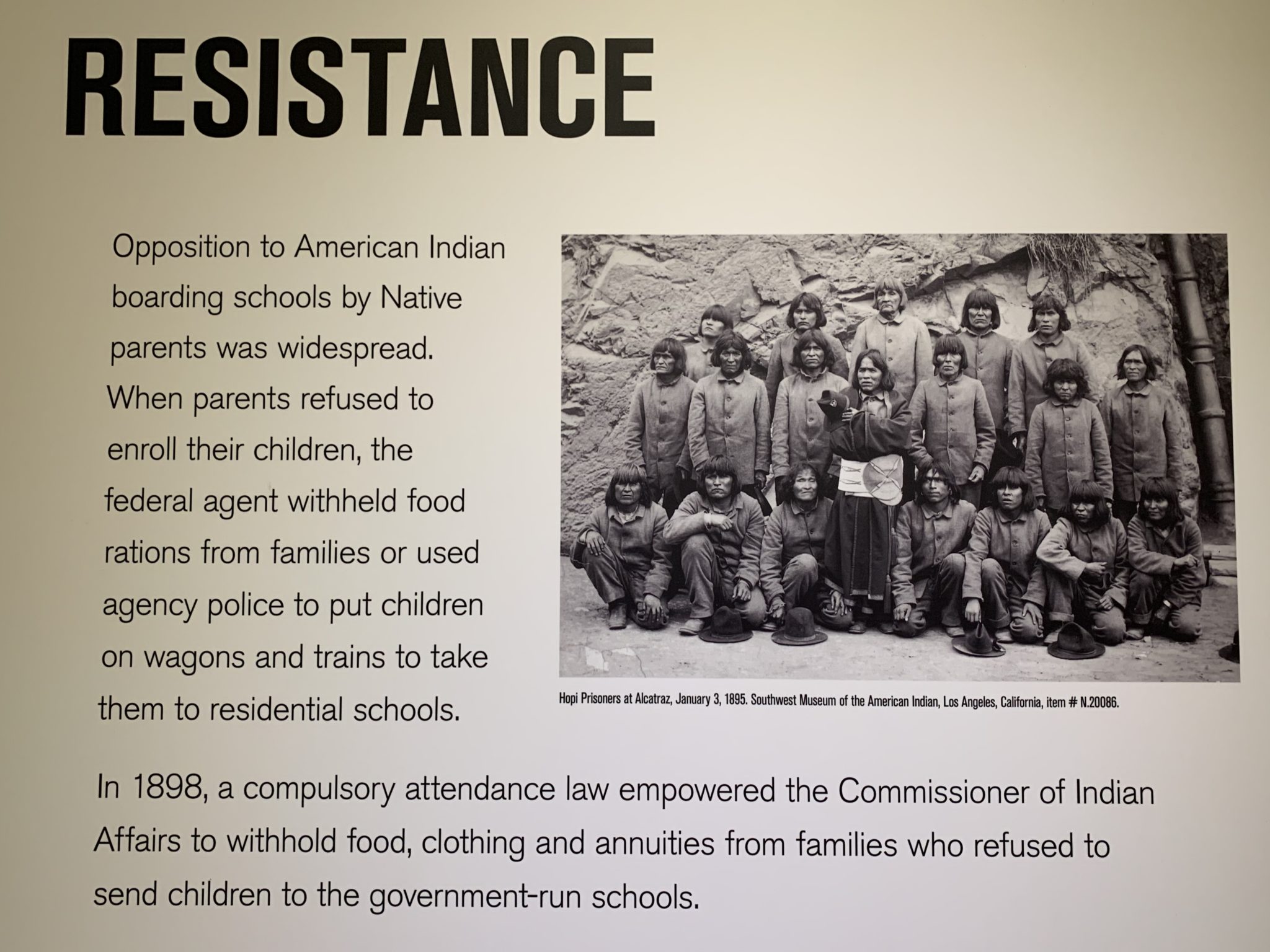
Eventually, something unexpected began to happen. As one student put it, “The schools were supposed to turn us into white people, but we turned the schools into Indian schools.”
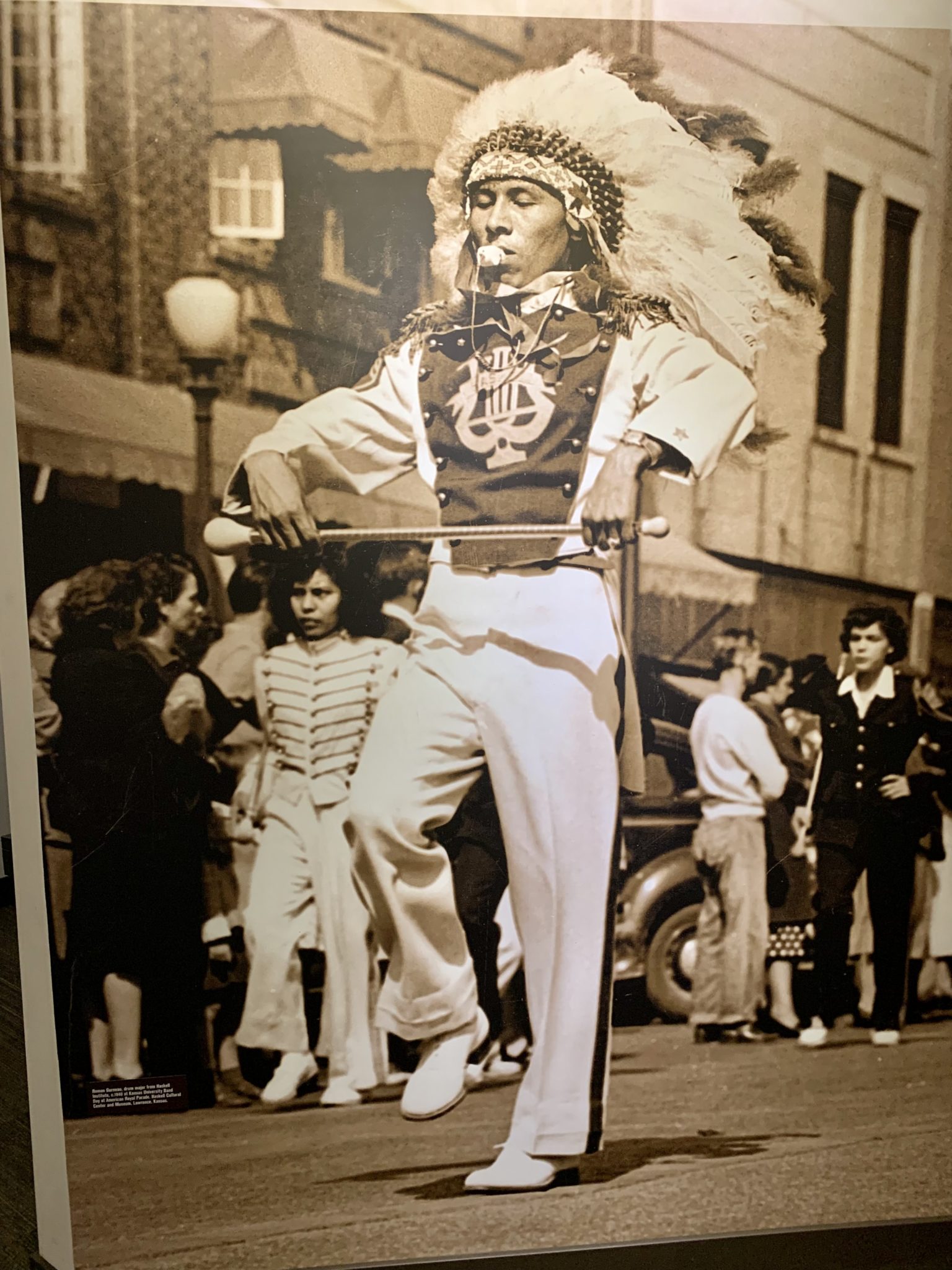
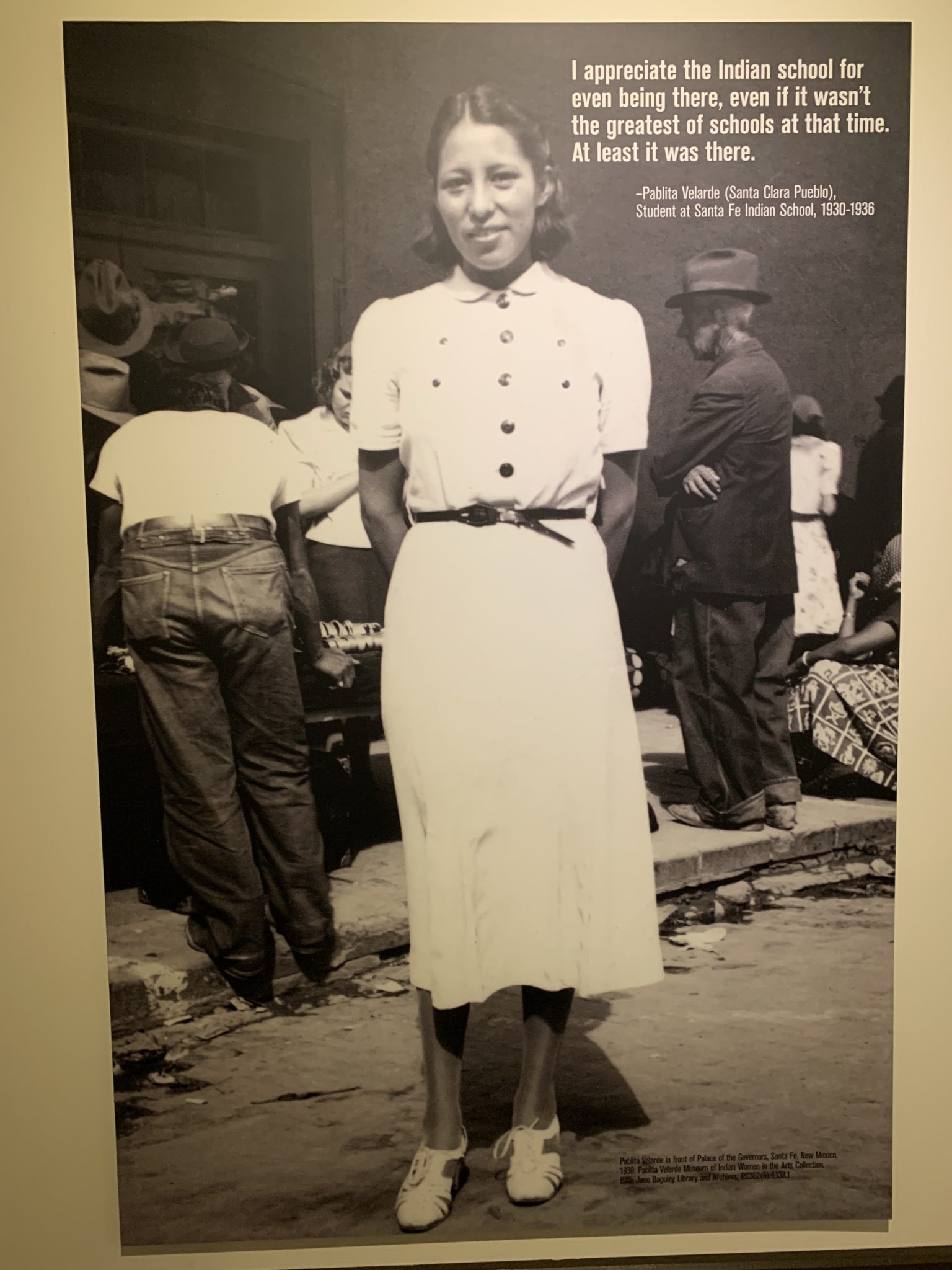
By the time Pablita Velarde spoke these words, the notion that “Indian-ness” needed to be eliminated was on the decline.
Changing political and cultural trends brought about more reforms. The rise of Native activism and involvement in education by tribal nations in the 1960s and 1970s resulted in a peak enrollment of 60,000 in 1973. The passage of the Indian Self-Determination and Education Assistance Act of 1975 emphasized decentralization of students from boarding schools to local schools. Many of the federal boarding schools closed in the 1980s.
Today, there are only four off-reservation boarding schools run by the Bureau of Indian Education. These schools are supported by Native communities. In fact, some students come from families who have attended the same boarding school for generations.
Over the decades, Native Americans have forged an intense and meaningful relationship with the boarding school system. The students took what was given them and made something better of it. The boarding schools that survived into the 20th century changed substantially. New policies encouraged schools to celebrate Native heritage, with more emphasis on American Indian art, culture, language and history”
Heard Museum commentary
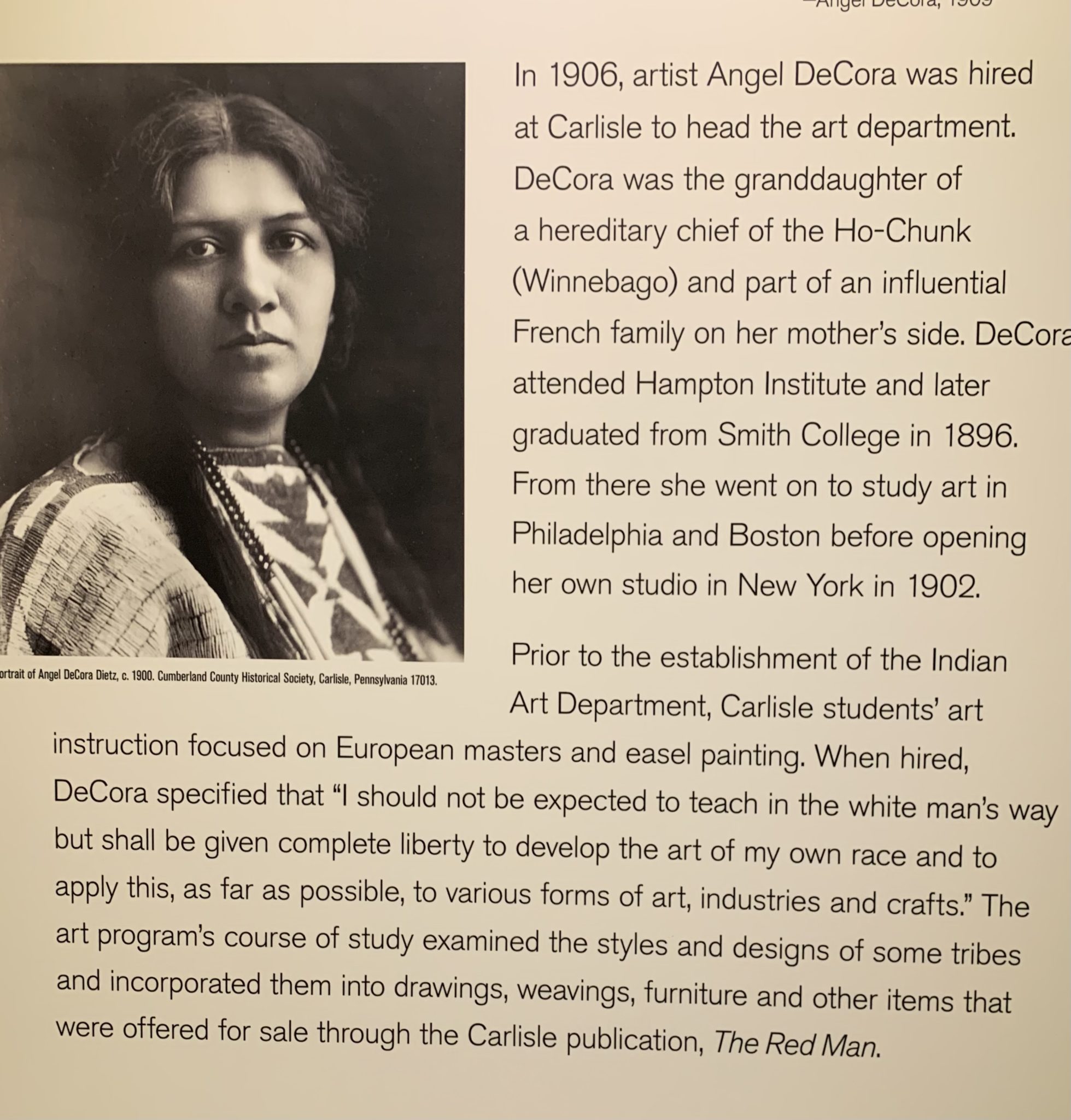
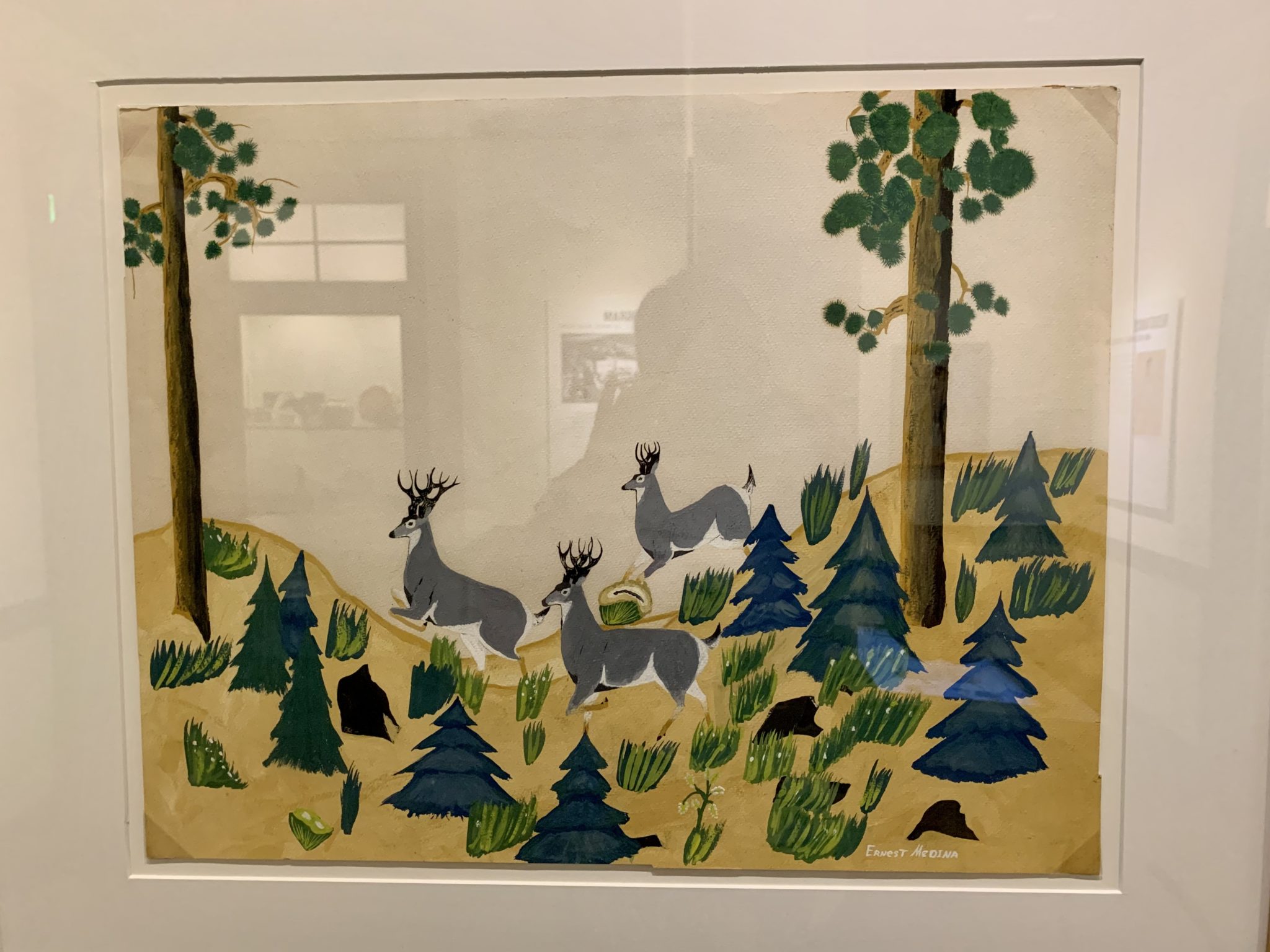
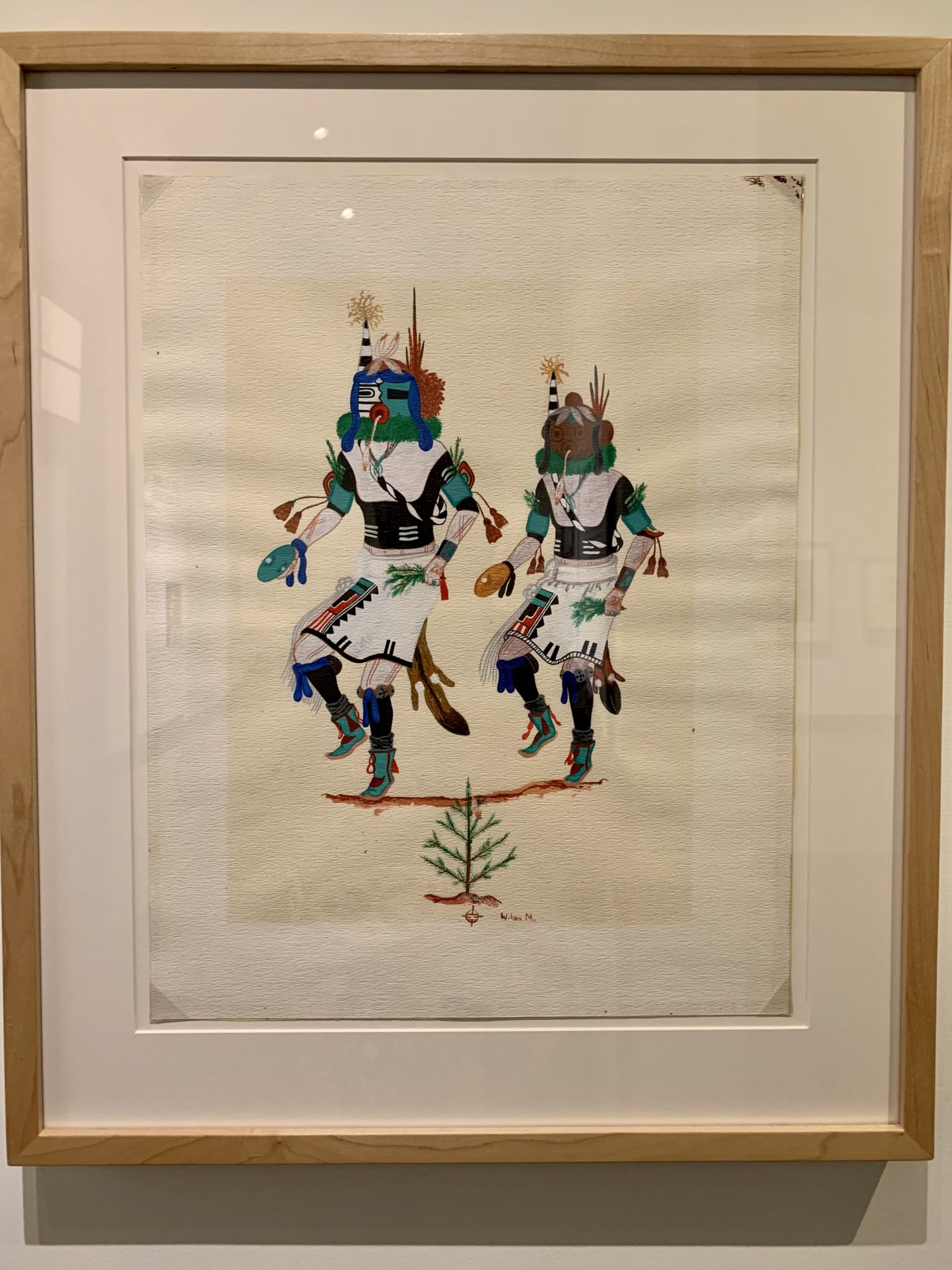
Does a prom or a marching band outweigh a rape or death from preventable disease? Of course not. But if the former, along with decent education, are on the rise and the latter are in decline, it has to be good news.
Nothing can erase or excuse the history of Indian schools. Nor does cultural relativism — “They meant well” — justify death from neglect, harsh punishment, or sexual assault. But if today’s schools can foster self-respect and promote the exchange of ideas between tribes, perhaps some good has been done.
Colonizing governments in New Zealand, Australia, and North and South America have forced Indigenous peoples to attend boarding schools. Each country’s stories are distinctive, but the Indigenous children share similar traumas.
Heard Museum commentary
The residential schools in Canada, which operated from the 1830s to 1996, were administered by Christian churches. The government subsidized the schools, but funding never was sufficient to cover the costs of the schools. The zeal and self-righteous character of missionaries in a colonial society, backed by the coercive powers of a government imbued in the racist philosophy of the day, fostered a culture of neglect and physical and sexual abuse of Indigenous children of Canada. The schools were in operation for more than 100 years, ending in the 1990s. More than 150,000 First Nations, Métis and Inuit children were forced to attend.
Abuses were also perpetuated within U.S, boarding schools, although some reforms took hold in the 1930s. Canadian residential schools saw few changes into the 1950s. When funding increased in the 1960s, the coercive, assimilationist residential school mission began to change, although neither the
Canadian nor the U.S. systems were ever free of abuse.”

There’s much more to say about Indian schools but I’m not qualified to say it.